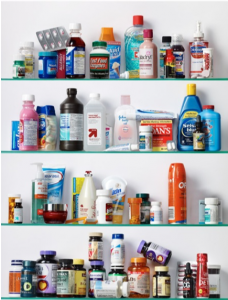By Joyce Yu, PharmD, ORISE Fellow and Clydette Powell, MD, MPH, FAAP, Director, Division of Health Care Quality, ODPHP
March 20 marks the first day of spring. With it comes tidings of new life, warm weather, and — last but not least — National Clean Out Your Medicine Cabinet Day!
We know that people tend to keep expired or unused medications in their homes. So now is the perfect time for health professionals like you to encourage your patients to include their medicine cabinets in spring cleaning. Explain to your patients that storing unused medications in an easily accessible cabinet can put their loved ones in danger — according to results from the 2016 National Survey on Drug Use and Health, unused prescription drugs were the most common source of misuse and diversion in teens.
Using leftover medications to self-medicate is also a common practice when patients don’t feel the need to see their doctor. But medications might not be effective after their expiration date. It’s especially important not to take this chance with essential medications like blood pressure pills or blood sugar-lowering agents. These medications can protect patients from life-threatening complications, like a heart attack or stroke.
ODPHP aims to mobilize health professionals to promote safer medication use. To achieve this, ODPHP released the National Action Plan for Adverse Drug Event Prevention (ADE Action Plan) in 2014. Part of the ADE Action Plan is devoted to providing health professionals with specific resources on safe medication storage, use, and disposal to avoid potential adverse events. For example, every year the Drug Enforcement Administration (DEA) hosts National Prescription Drug Take Back Day. This event is designed to empower patients and provide them with an opportunity to safely dispose of expired medications — this year, it will take place on April 18. Patients can also use collection site locators to help them find authorized collectors year round.
Other resources to help patients dispose of medications include:
- DisposeMyMeds.org — a locator for independent pharmacies that take medication disposals
- How to Dispose of Medicines Properly — a guide from the Environmental Protection Agency (EPA)
- Disposal of Unused Medicines: What You Should Know — information from the Food and Drug Administration (FDA)
- Drug Disposal Locator Tool — a resource from the National Association of Boards of Pharmacy (NABP)
Although various organizations and agencies offer locations to dispose of medications, some patients may have trouble accessing them due to lack of transportation. In these situations, there are easy-to-follow steps that patients can take to dispose of their medications at home. For example:
- Crush and pour pills and capsules into a sealable bag. Fill the bag with unappetizing and unappealing materials — for example, kitty litter, coffee grounds, or dirt. This can discourage people who may be looking for drugs in the trash.
- Remove and tear all personally identifiable information from bottles and packaging to make it unreadable. This helps patients keep their medical information private.
- Flush certain medications down the toilet. The FDA has guidance on how to flush certain medications. In general, it’s a good idea to flush medications that can seriously harm humans and pets with just one accidental exposure (like fentanyl patches) if a take-back program isn’t available.
So in honor of National Clean Out Your Medicine Cabinet Day on March 20, make sure you talk with your patients about including their medicine cabinets in spring cleaning!
To learn more about drug take-back initiatives, visit the DEA website.




